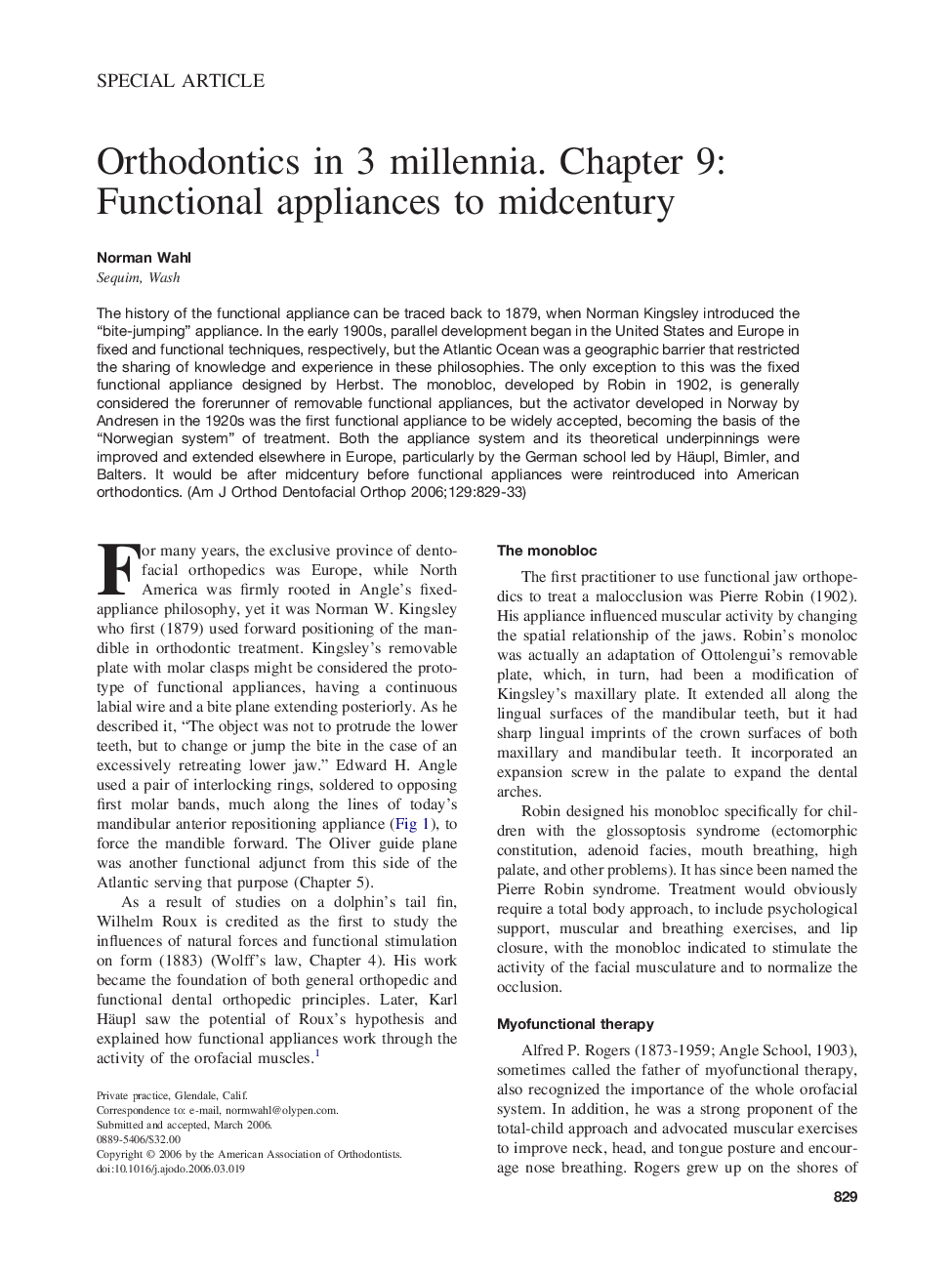| Article ID | Journal | Published Year | Pages | File Type |
|---|---|---|---|---|
| 3120165 | American Journal of Orthodontics and Dentofacial Orthopedics | 2006 | 5 Pages |
The history of the functional appliance can be traced back to 1879, when Norman Kingsley introduced the “bite-jumping” appliance. In the early 1900s, parallel development began in the United States and Europe in fixed and functional techniques, respectively, but the Atlantic Ocean was a geographic barrier that restricted the sharing of knowledge and experience in these philosophies. The only exception to this was the fixed functional appliance designed by Herbst. The monobloc, developed by Robin in 1902, is generally considered the forerunner of removable functional appliances, but the activator developed in Norway by Andresen in the 1920s was the first functional appliance to be widely accepted, becoming the basis of the “Norwegian system” of treatment. Both the appliance system and its theoretical underpinnings were improved and extended elsewhere in Europe, particularly by the German school led by Häupl, Bimler, and Balters. It would be after midcentury before functional appliances were reintroduced into American orthodontics.
